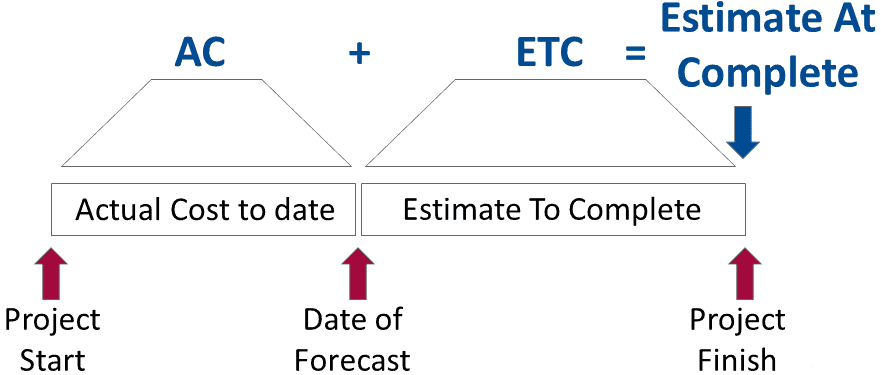I can think of various reasons why you as a project manager may be asked this title question. One reason is that another project with a higher priority than yours has cropped up and needs your project’s funding. It doesn’t mean that you have done a bad job managing the project! If your project gets cancelled to re-allocate your funding, then don’t let that be a blow to your ego! (Note that if you WERE doing a bad job managing the project, that YOU might get cancelled, not the project! Now THAT can be a blow to your self-esteem…)
The typical reason for the question is that your finance organization needs to ensure that the appropriate amount of funding is available to pay for your anticipated project expense. So, you are being asked to update your forecast at regular intervals. The forecast can be expressed in a few ways:
- Estimate To Complete (ETC) – How much money is forecasted to be spent from now to the completion of the project (hence “To Complete”).
- Estimate At Complete (EAC) – How much money is forecasted to have been spent in total at the completion of the project (hence “At Complete”).
- Variance At Complete (VAC) – How much actual spending is forecasted to be over or under budget at the completion of the project (hence “At Complete”).
The first two terms, EAC and ETC, are closely related. The difference between the two is the actual amount of money that you have already spent on the project up to now, referred to as the Actual Cost (AC). The diagram below depicts the relationship that EAC = AC + ETC:

With that being said, the perspective is somewhat different for the PMP® Exam candidate. Yes, it would be wise to know that EAC = AC + bottom-up ETC as a basis for answering pertinent exam questions. However, the approach is too detailed and cumbersome for an extensive objective problem on the exam. There are other methods of forecasting EAC that are more objective; these would be more probable to see as the basis for objective problems on the exam. Therefore, since the exam is scenario-based, you should understand which scenario drives which method of forecasting.
My next few SavvyPM posts will address the right approach based on the described scenario. Stay tuned!

